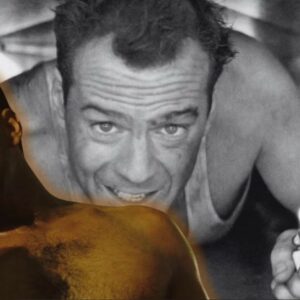Tina Turner, the Queen of Rock ‘n’ Roll, is not just an iconic figure in the music industry; she is a symbol of strength, resilience, and reinvention. Known for her powerful voice, electrifying performances, and timeless hits, Turner’s music has resonated with audiences across generations. However, beyond her musical career, Turner’s life story—marked by both extraordinary achievements and profound personal struggles—has been the subject of numerous documentaries. These films not only offer a glimpse into her rise to fame but also highlight her determination to take control of her narrative, ensuring that her story is told with authenticity, emotion, and integrity.
Throughout her career, Turner participated in, and in some cases, produced documentaries that explored the depths of her life. Her willingness to open up about her experiences, from her tumultuous relationship with Ike Turner to her triumphant comeback in the 1980s, has shaped her legacy in ways that go beyond her music. In fact, it’s in these documentaries where Turner’s true impact as a cultural icon and a beacon of empowerment shines through.
This article delves into Tina Turner’s involvement in the documentary genre, examining her roles both as a subject and a producer. It explores how her participation in documentaries has affected her legacy, the role of filmmakers in crafting her narrative, and the lasting cultural impact her story continues to have.
1. Tina Turner’s Documentary Appearances
Tina Turner’s life has been depicted in various documentaries over the years, but perhaps none have captured her emotional journey as powerfully as Tina (2021). Directed by Dan Lindsay and T.J. Martin, Tina is a raw and unflinching portrait of Turner’s rise to fame, her personal struggles, and her reinvention as a solo artist. The documentary chronicles her early years in Nutbush, Tennessee, her abusive marriage to Ike Turner, and her eventual rise as one of the most successful female artists in rock history.
What makes Tina so compelling is Turner’s openness in sharing her personal experiences. She allows the cameras to capture her vulnerabilities, allowing viewers to witness not only her triumphs but also her pain and suffering. Turner speaks candidly about her years of domestic abuse, the challenges of breaking free from Ike Turner’s control, and the strength it took to rebuild her career after a period of obscurity. This vulnerability made her more relatable to audiences and solidified her as a symbol of empowerment.
In addition to Tina, Turner’s story has been told in several other films, such as What’s Love Got to Do with It (1993), the biographical film based on her memoir I, Tina. While this film is not a documentary, it still plays an important role in shaping the public’s understanding of Turner’s life. However, it’s in the documentaries where Turner truly shines as a storyteller, guiding audiences through the nuances of her experiences.
By allowing the cameras into her life, Turner humanized her public persona and allowed her fans to see the person behind the stage name. Her participation in documentaries made her narrative more accessible and impactful, providing audiences with a deeper understanding of her strength, resilience, and ability to overcome adversity.
2. Tina Turner as a Producer of Documentaries
While Tina Turner is best known for being the subject of documentaries, she was not content to simply be a passive participant in the storytelling process. Turner took an active role in the production of her documentaries, working closely with filmmakers, directors, and producers to ensure that her life story was portrayed authentically. She was determined that her story would not be romanticized or sanitized for public consumption; instead, she wanted to ensure that the truth, both the highs and the lows, would be captured with honesty and respect.
Turner’s influence in the production process can be seen in the careful crafting of her documentaries. In Tina (2021), for example, Turner was deeply involved in shaping the narrative, approving footage, and providing insights into the most intimate parts of her life. Her commitment to truth-telling was evident throughout the film, as she pushed back against any attempts to sugarcoat her experiences. Turner wanted to make sure that the story reflected the real Tina Turner—the woman who endured unimaginable hardship and yet emerged as a true survivor.
Her proactive approach to documentary production also ensured that her legacy would be presented in the way she wanted it to be remembered. In a world where celebrities often have little control over how their stories are told, Turner’s involvement in the production process allowed her to shape the narrative and retain ownership over her image. It was not just about telling her life story—it was about telling it on her terms.
3. The Impact of Documentaries on Turner’s Legacy
Documentaries have played a crucial role in solidifying Tina Turner’s legacy as one of the most influential artists of all time. Through films like Tina and What’s Love Got to Do with It, Turner’s life has been immortalized not only as a musician but also as a symbol of strength, resilience, and empowerment.
By sharing intimate details of her struggles and triumphs, Turner has become a role model for millions of people around the world. Her story—of overcoming abuse, overcoming the odds, and reinventing herself as a global superstar—has inspired countless fans, particularly women, to find their own strength and resilience. Turner’s willingness to speak openly about her abuse and struggles with mental health has also helped break down taboos surrounding these topics, offering a platform for others to share their own stories.
Documentaries have also allowed younger generations to connect with Turner’s music and story. While her hits like “Proud Mary,” “What’s Love Got to Do with It,” and “Private Dancer” are timeless, it is the documentaries that have helped introduce her to new audiences, ensuring that her legacy will continue to inspire for years to come. By revealing her humanity and her ability to overcome adversity, Turner has become not just a musical icon, but also a symbol of personal empowerment and perseverance.
4. The Role of Documentary Filmmakers in Turner’s Story
While Tina Turner played an active role in shaping the documentaries about her life, it is important to recognize the contributions of the filmmakers who worked alongside her. Directors and producers played a crucial role in framing Turner’s story and making her life both compelling and accessible to audiences. The best documentaries are not simply a collection of facts and anecdotes; they are crafted narratives that capture the essence of the subject.
Filmmakers such as Dan Lindsay and T.J. Martin had the difficult task of balancing the two sides of Tina Turner’s persona—the superstar and the deeply private individual. Turner’s life was marked by both extraordinary public success and profound personal hardship, and it was up to the filmmakers to weave these elements together into a cohesive narrative. The challenge was to depict Turner with integrity and respect while also showcasing her extraordinary resilience.
Throughout the production process, filmmakers worked closely with Turner to ensure that her story was told with accuracy and honesty. In doing so, they were able to create films that not only celebrated her musical achievements but also highlighted her human side—her vulnerability, her courage, and her strength.
5. The Future of Tina Turner’s Documentaries and Cultural Impact
Even after her passing in 2023, Tina Turner’s legacy continues to resonate with audiences around the world. Her influence on music, culture, and social justice remains profound, and future documentaries are likely to explore new aspects of her life and career. As filmmakers continue to explore her story, there will undoubtedly be new angles and untold stories that will shed light on different facets of her remarkable life.
Turner’s cultural impact goes beyond music. She broke down barriers for women in rock music, defied racial stereotypes, and became a global icon of empowerment. Her story is a testament to the power of perseverance and the importance of owning one’s narrative. As documentaries continue to be made about her life, her influence will continue to inspire new generations of fans, artists, and activists.
The lasting power of Turner’s story lies not only in her music but in the way she has lived her life—boldly, unapologetically, and with immense courage. Her story will continue to be told, and her legacy will live on through future documentaries that explore the complexities of her journey.
Conclusion
Tina Turner’s participation in and production of documentaries has been an essential part of shaping her legacy. These films have allowed her to tell her story on her own terms, revealing both her triumphs and struggles with honesty and authenticity. Through her involvement in these documentaries, Turner has become not just a musical icon but a symbol of strength, resilience, and empowerment for people around the world. As her story continues to inspire future generations, it is clear that the power of documentaries will play a key role in keeping her legacy alive.





